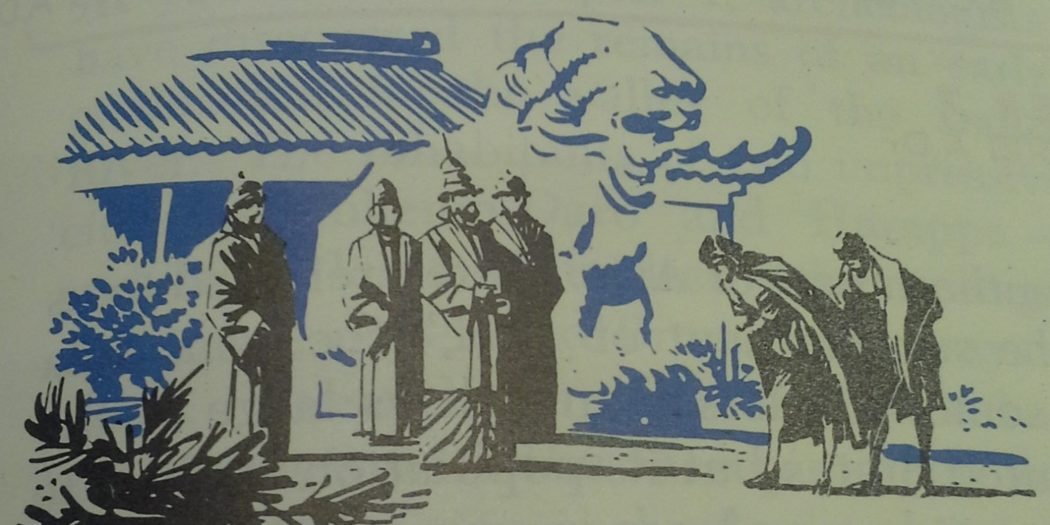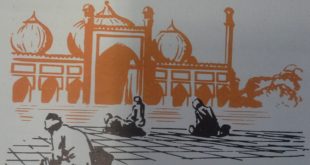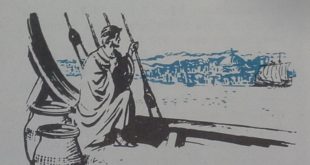In the same way that important ancient civilizations grew out of small beginnings in the valleys of the Nile, the Tigris-Euphrates and the Indus, so another great civilization of Early times — that of China — was cradled in the valley of the Yellow River. To be sure, China’s civilization did not commence as early as did Egypt’s, Mesopotamia’s, or India’s. The ancient Egyptian and the Mesopotamian kingdoms lost their power many centuries ago and early India never became completely united under one empire. China therefore has had a longer national life than any other ancient or modern state. It is the oldest of today’s nations.

1. How Did Early China Develop Under Various Ruling Families?
China is dominated by three great rivers. China’s life, today as in olden times, centres in three river valleys. The great Hwang-Ho, Chinese for Yellow River, rises in the lofty mountains of Tibet. Winding its way slowly across the wide plain of North China, it flows into the Yellow Sea, so called because of the yellow soil the great river empties into it. Unlike Egypt or India, the North China plain has a climate like that of southern Canada, with warm summers and severe winters. The wind storms, disastrous dry spells and terrifying floods often bring destruction and misery to its inhabitants.
Farther to the south is the valley of the Yangtze River. The Yangtze is one of the longest rivers in the world. In all, it flows nearly 4000 miles on its way to the sea. Still farther south is the Si, or West River. The climate of South China is warm and there is a heavier rainfall there than in North China. Many of China’s good ports are located along the southern coast.
A Bronze Age civilization appeared first on the North China plain. Man’s earliest appearance in China is cloaked in mystery. A Bronze Age civilization first appeared in the valley of the Yellow River sometime around 2000 B.C. The Chinese people of this age lived in villages and devoted themselves to raising crops of grain. They possessed horses, cattle, sheep, goats and possibly water buffaloes. Craftsmen worked in bronze and pottery. The Yellow River people were apparently familiar with the principle of the wheel, for they used horsedrawn war chariots. Most of our knowledge of this period comes from legends. The Chinese system of writing, however, was in use even among these ancient people. Recently there have been dug up a large number of bones which were used in religious ceremonies in order to discover the will of the gods. The questions written on these bones are helpful clues to what men of that time were thinking and doing.
Apparently a ruling tribe or family named Shang gained control of this early Chinese civilization. The Shang family united the villages in the Yellow River valley and ruled over 600 years, be ginning about 1766 B.C. Under their form of government the king was assisted by a number of officials, each in charge of a particular department such as farming or public works. There was at least one walled city, the capital of the kingdom and perhaps other cities as well.
Most of the history of China is the story of powerful ruling families. The Shang was one of the first dynasties to rule China. (A dynasty is a royal family which hands down its rule from father to son.) In fact, until it became a republic early in the 1900’s, China was governed most of the time by a series of dynasties which supplied its kings and emperors. The chart mentions some of the leading dynasties with the approximate periods of time they were in power.
The importance of these dynasties does not lie in their names, nor have they all been named. What is really important is that they gave China long periods of fairly uninterrupted, orderly government. Under the central authority of powerful dynasties, China developed into a unified country. Its boundaries were extended and it reached a high level of civilization. China did have invaders, but instead of destroying or changing Chinese civilization, they merely formed new dynasties. Each ruling family continued the government much as before and became Chinese in its thinking and actions. In the next few pages you will learn something of the accomplishments of the principal dynasties.
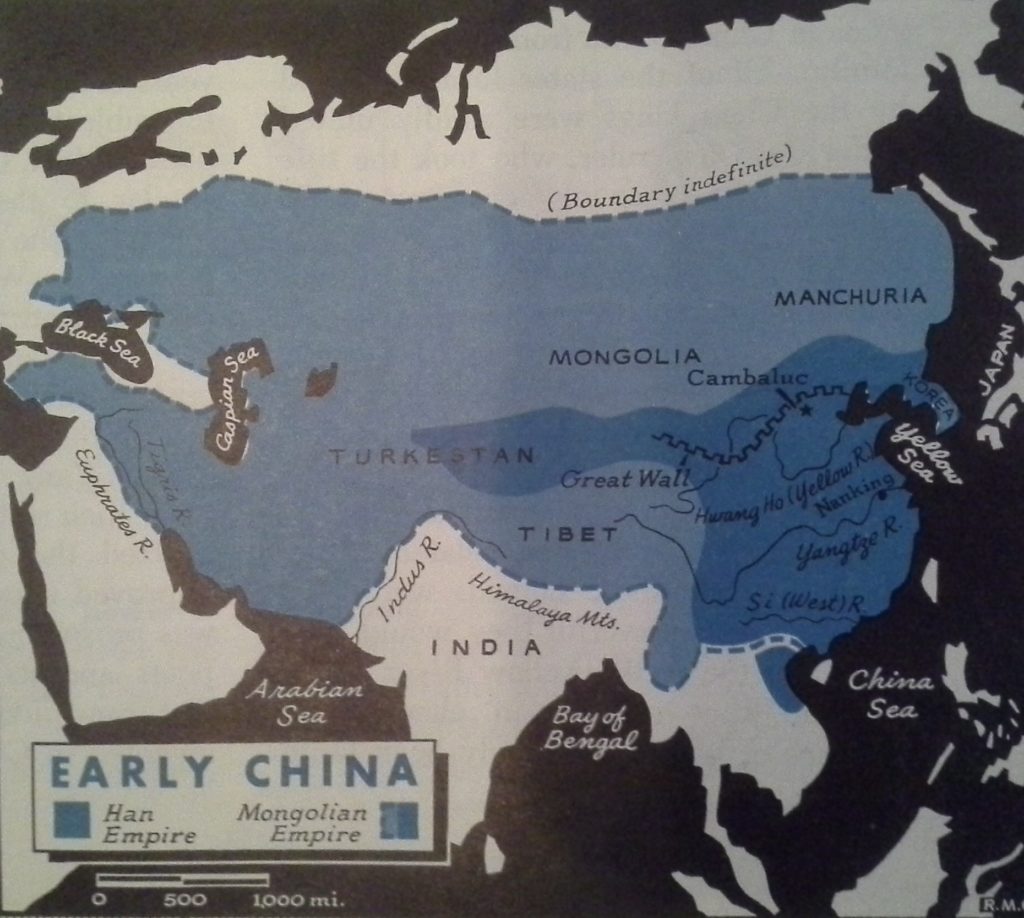
The Chou dynasty shaped the government of China. In time the Shang family was overthrown by the rulers of a nearby state. These rulers established the Chou dynasty. The Chou dynasty was the longest in Chinese history, covering the periods of the Assyrian, Chaldean and Persian Empires in western Asia. The Chou rulers expanded the kingdom of China to the west and south until it included more than half of the China of today. This kingdom, however, was divided into a number of half independent states whose princes accepted the overlordship of the Chou ruler.
Under the Chou dynasty, the central government was organized into several departments which enforced uniform laws, saw to it that the same weights and measures were used and collected taxes. These departments continued to operate in all later periods of Chinese history. Also during the Chou period the foundations of Chinese civilization were laid, including the writing of great books dealing with religion and philosophy.
Under the Ch’in and Han dynasties China became a great empire. Although in power only a short time, the Ch’in dynasty was very important. Probably the name of China comes from this influential family. All of the states formerly ruled by the Chou kings were solidly united under the Ch’in ruler, who took the title emperor. In place of dependent states ruled by powerful nobles, China was now divided into provinces governed by officials appointed by the emperor.
Besides centralizing China’s government, rulers of the Ch’in family strengthened the country against outside enemies. China had long been disturbed by the attacks of wandering barbarians from the northwest, the Huns and related tribes. At times when these nomads were well organized and powerful they would seek control of the fertile Yellow River lands. To hold the invaders in check, long stretches of wall had already been built. Under the Ch’in rulers these were now connected and extended to form the famous Great Wall of China. The tribesmen were foiled and had to turn westward, later to make their way into Europe.
In spite of these gains, the Ch’in dynasty had made enemies among powerful nobles who finally caused its overthrow. The Han dynasty, which followed, ruled at the same time that Rome reached the height of its power. Though, the Han Empire was larger even than the Roman Empire. It included all of China itself, as well as great parts of Manchuria, Korea, Mongolia and the countries of central Asia as far west as Turkestan. One result of this expansion to the west was the opening of trade routes across central Asia. Over-land trade routes to the west passed north of India to the Tigris River and to ports on the Black Sea and the Mediterranean. Under the Han dynasty, the organization of the Chinese Empire and the character of its civilization became fixed in the forms they retained until recent years. It was at this time that the religion of Buddha reached China.
Ancient China reached its peak under the T’ang dynasty. The rule of the Han family was followed by several hundred years of invasions and rebellions. Many of the subject countries were lost to the Empire. In fact, China entered a “Dark Age” similar to that experienced by Europe following the decline of the Roman Empire in the West, but order was finally restored and the lost lands reconquered by the T’ang dynasty. These rulers pushed the frontiers of the Empire farther to the south and to the west.
The T’ang rulers are noted for more than their military successes. They organized the government efficiently and improved education. Under them, China was prosperous and produced its greatest poets and its most famous painter. At that time, too, the art of printing was invented in China.
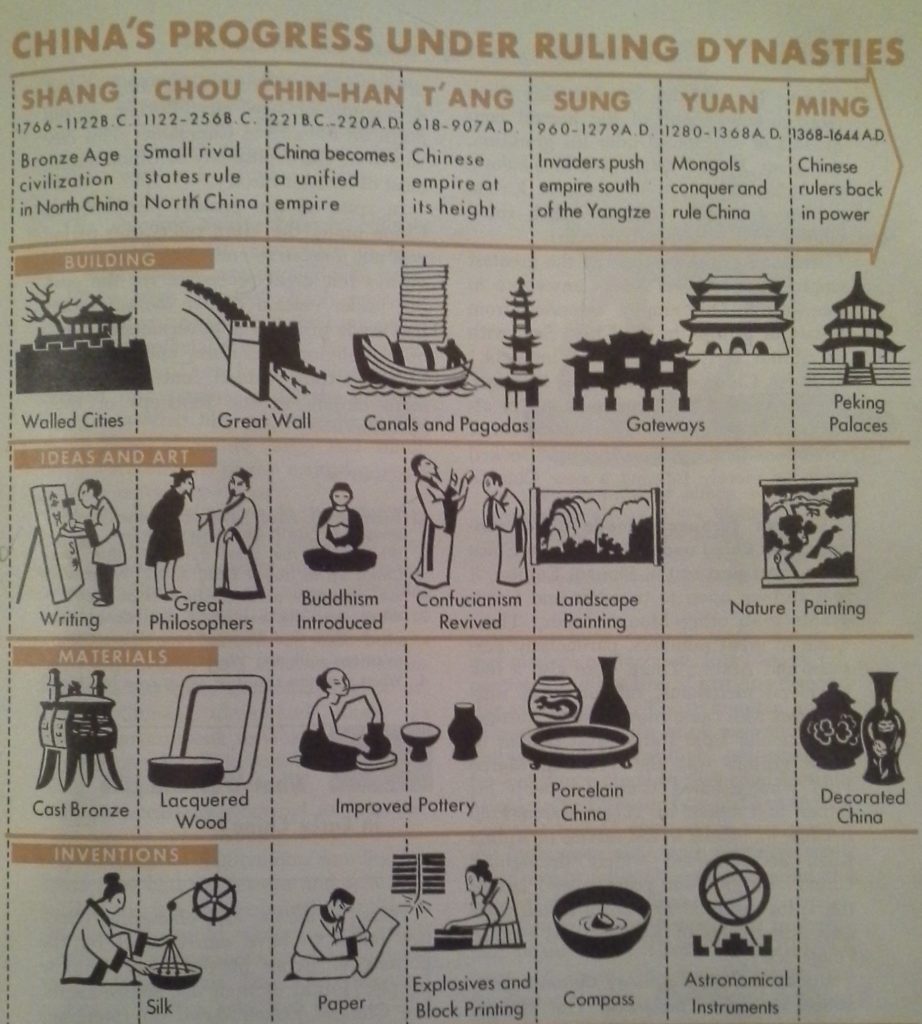
The Mongols established a powerful dynasty. For several centuries after the end of the T’ang dynasty, the Chinese suffered from attacks of savage tribes from the north. A new Chinese dynasty, the Sung, was unable to drive out these invaders and withdrew its control to territory south of the Yangtze River. In the 1200’s A.D., another invading horde, the Mongols, swept over most of North China. Their leader was Genghis Khan, one of the fiercest conquerors of all time. Under his grandson, the great Kublai Khan, the Mongols overran all of China. Kublai set up a Mongol dynasty which ruled China for about a hundred years.
Kublai was the overlord of the greatest empire that had yet arisen anywhere in the world. This empire extended from Russia in Europe to the China Sea, with its capital at Cambaluc in North China. The Mongols, however, did not oppress the Chinese people or attempt to overthrow the Chinese system of government. They were therefore looked upon as merely forming a new Chinese dynasty.
Western Europeans made direct contacts with China under the Mongols. Since China was part of the Mongol Empire, it was thrown open to travelers and immigrants from other Mongol lands. These came in great numbers, particularly Persians and Arabs. There were also a few travelers, merchants, officials and missionaries who came from western Europe, in particular from Italy. Most famous of these visitors was the Venetian Marco Polo who reached Cambaluc with his father and uncle in 1271. Marco Polo became an official in the service of KubIai Khan and traveled widely throughout China. Twenty-four years passed before the Polos returned to Venice to tell their astounding tales of Kublai’s vast empire.
Under the Ming dynasty Chinese civilization ceased to progress. The Mongol power reached its height under Kublai Khan. Later rulers were less capable and the Mongol dynasty was soon overthrown. A native Chinese dynasty, the Ming, gained control. The Ming emperors did not rule as large an empire as the Han or T’ang, but they built up a considerable navy and their fleets made expeditions as far south and west as Java, Ceylon and India. For a time Nanking served as the capital city, but a later Ming erected a magnificent new city, Peking, in the north on the site of Cambaluc. This city was to be the capital city of China during most of its later history.
In spite of the general prosperity of China under the Ming rulers, this period was not a creative one. The Chinese had always felt great reverence for the past, but under certain earlier dynasties they had made progress in government, philosophy, religion, literature and art. Now, however, they seemed content to follow more closely in the footsteps of their ancestors.
2. What Was life like in Early China?
Wars, invasions and changing dynasties failed to have much effect on the pattern of living of the early Chinese people. Proud of their accomplishments, the Chinese looked down on foreigners and foreign customs as rude and barbarous. This devotion to an accepted way of life had many advantages, but it made the Chinese less willing to accept changes resulting from contact with other peoples.
Stable government held China together and preserved its civilization. Important in preserving China’s civilization was its government. At the head was the emperor, who possessed unlimited power. If an emperor used this unlimited authority unwisely, rebellion might drive him from his throne. This fate overtook many bad or weak emperors and helps to explain why one Chinese dynasty replaced another.
The emperor ruled through officials chosen by him and responsible to him. The huge country was divided into provinces, or large districts. Each province had a military governor, a civil governor and a third official who kept his eyes on the other two. These large provinces were divided into smaller units, the smallest being somewhat like our townships. In all these divisions, large and small, there were officials of the central government to enforce the laws.
Government service was important in China. This system of centralized government required a large body of trained officials. China had no class of nobles who inherited special rights or government positions. Instead, all officeholders were required to pass strict examinations which tested their understanding of accepted Chinese ideas and ideals. In theory, government service was open to any person who could pass these examinations. In practice, however, the system did not necessarily work out as expected. Government jobs usually went to members of wealthy landholding families because they had the leisure and schooling needed to pass the examinations. These officeholders could then benefit their families by giving them special privileges such as lower taxes. Thus, there grew up a class of wealthy, educated families who dominated the government service.
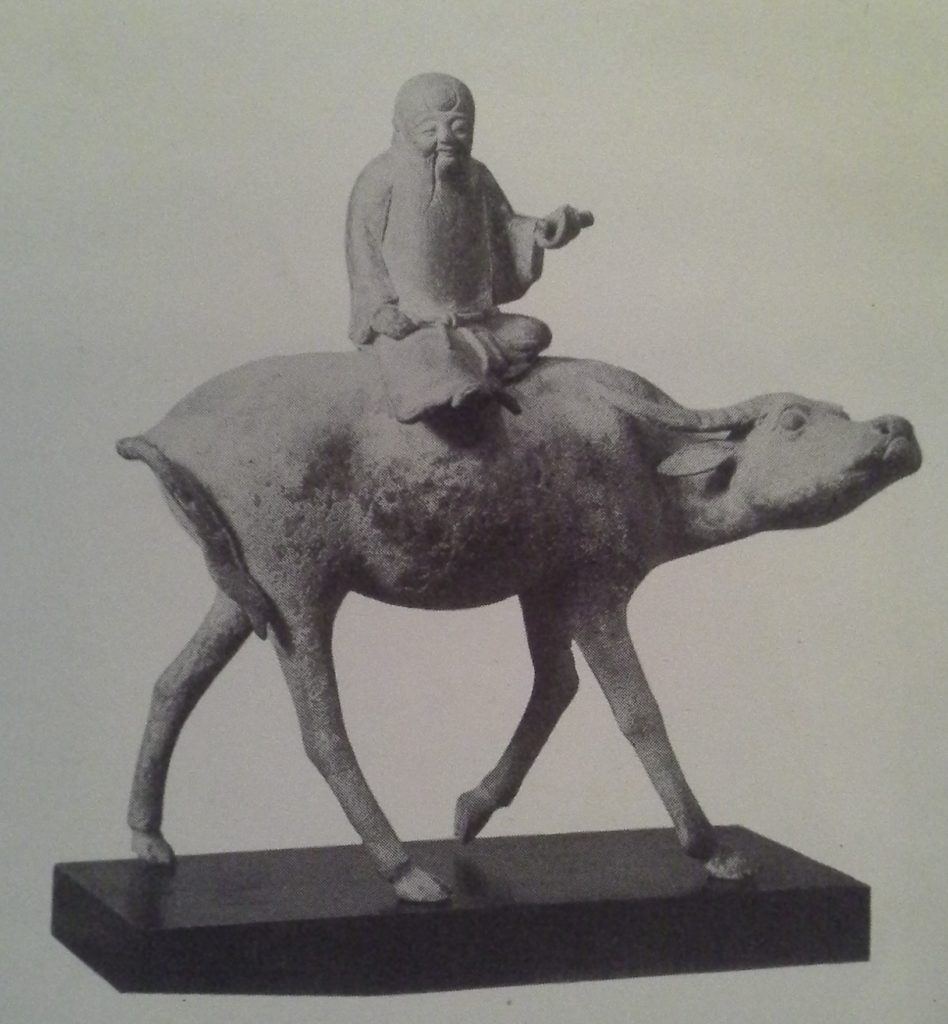
Public works were undertaken. Various rulers of China erected imposing buildings and public works. One of these was the Great Wall of China, constructed to keep raiding tribes out of China. Although some extensions were added later, it was practically completed about 200 B.C. The Wall extended over plains, hills and valleys for about 1500 miles. In these days of huge machines and modern engineering, it is hard to appreciate the difficulties of carrying through this great project. Try to imagine a wall of earth faced with brick and stone, 13 feet wide and 25 feet high and extending for a distance equal to that from Detroit, Michigan to El Paso, Texas. This feat of engineering was carried out by human labour, with primitive tools, in an unfavourable climate and amid the attacks of hostile tribes.
The Great Wall, had fine irrigation and flood-control systems built in China 2300 or more years ago and are still in use. Canals were built, too. By about 600 A.D. a system of canals linked much of China together. To build one great canal connecting the Yellow and Yangtze Rivers, about 3 million workers were drafted. Furthermore, to aid overland travel, China’s highway system was extended under the Mongol dynasty to the borders of Persia and Russia. Large-scale projects such as the Great Wall, irrigation systems, canals and roads could have been constructed only by strong governments having ample funds and plenty of man power. The government of China possessed these advantages.
Farming was the principal occupation. Most Chinese were and still are, farmers. Though some were tenant farmers who worked on the large estates of wealthy persons, Chinese farmers as a rule owned their land. The Chinese followed the custom of dividing a farm at its owner’s death among his sons in equal portions. You can see that after several generations the farms would become very small. Moreover, heavy taxes claimed a large share of the farmer’s crop. Finally, much of China’s land, especially in the mountain and desert areas in the west, was not suited to farming, so, inspite of their hard work, most farmers were poor.
By careful farming, three crops of rice a year could often be raised in the south. In the north the main Chinese food crops were wheat and millet. The Chinese also grew soy beans, now an important American crop. As outside contacts grew, new crops were introduced. Among them was sorghum, which probably came from Africa, and (much later) maize, or corn, which came from America. The Chinese also raised cotton and cultivated mulberry trees, the leaves of which were fed to silkworms. Tea became an important product.
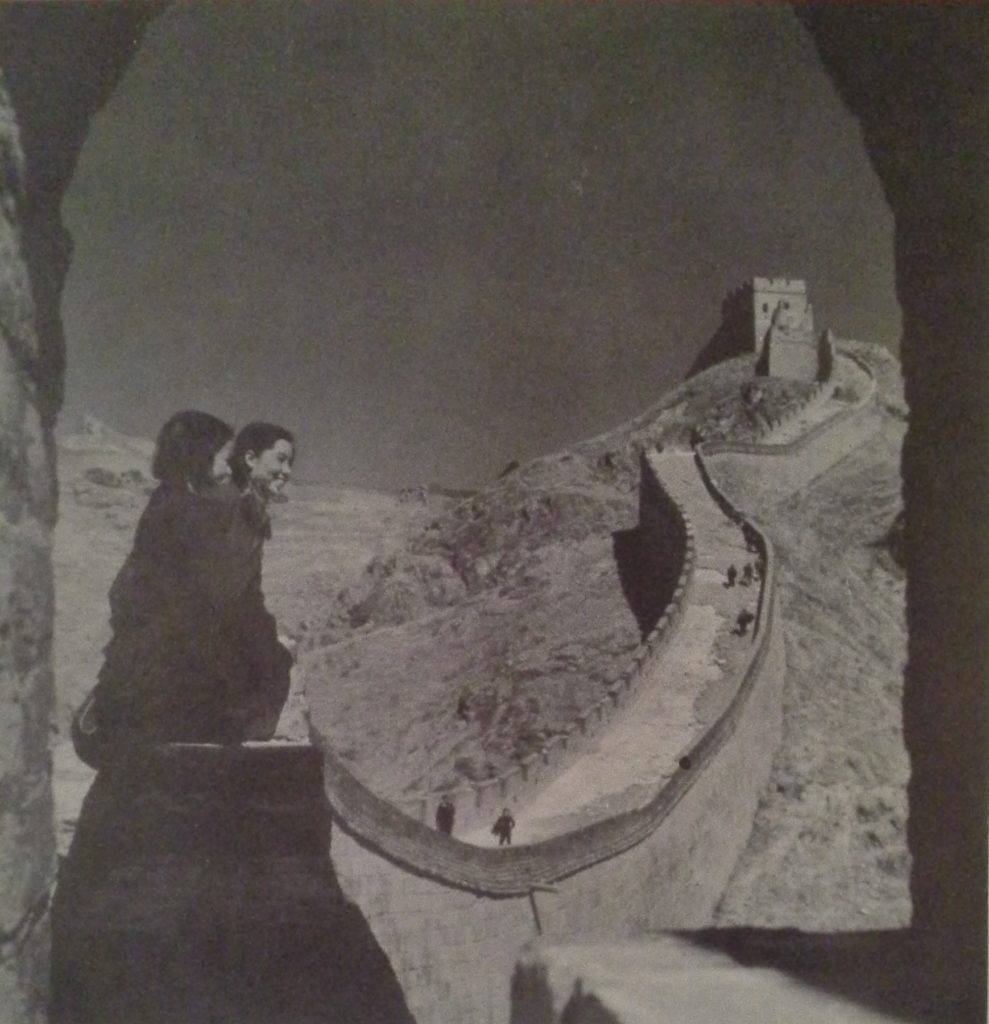
In the larger towns and cities skilled craftsmen produced varied products. China had many large towns and several great cities. Some cities were as large as or even larger than Rome or Constantinople. In the cities great numbers of craftsmen made their living producing a variety of articles. The workers in each trade formed groups which looked after the interests of their members. Produced by hand labour in homes or small shops, Chinese wares were distinguished by careful and skillful workmanship. Some of these products are of great value today, being rare items in museums.
Trade spread prosperity and ideas. For several centuries beginning about 600 A.D., when strong rulers extended China’s boundaries, more and more contacts were established with other parts of the world. Chinese merchants carried on business in Japan, Korea, Manchuria and southeastern Asia. They dealt with traders in India, Persia and Arabia. They even traded with northeastern Africa. Chinese porcelain for example, reached Egypt. In brief, the Chinese were by no means shut off from the rest of the world.
The world is indebted to the Chinese for many discoveries and inventions. The Chinese made certain important discoveries which were useful both to themselves and to the outside world. Marco Polo, for example, told his Venetian neighbours that in China there were black stones which, when burned, gave off heat. They did not believe him, but he of course meant coal. The Chinese were the first to produce porcelain, known to us as china or chinaware. If you ever wheeled a wheelbarrow, you used a Chinese invention. The lacquer used to give a hard, glossy finish to wood, leather and other surfaces originated with the Chinese, too. Another Chinese discovery, that silk could be made from the cocoons of silkworms, started the silk industry and trade. Even more valuable was the manufacture of paper from cotton cloth, a process invented about 150 A.D.
Other important inventions originated both in China and in other countries. Some Chinese inventions did not reach Europe, but were later developed on that continent. Printing, for example, was invented in China and later invented again in Europe. By about 600 A.D. the Chinese had learned to use block printing. Signs or pictures were carved on a block which was then inked. Later, the Chinese developed movable type. Each sign was on a separate block and could be arranged in any combination. Printing With movable type was much faster than block printing. A man named Gutenberg, made much the same invention quite independently in Germany several centuries later. Another Chinese invention that was duplicated in Europe was gunpowder, which was used in China as early as 600 A.D. in firecrackers. Later, Chinese troops learned to fill rockets with this explosive. Not until the 1300’s did Europeans use gunpowder in cannon. In addition, the Chinese apparently had some kind of a crude compass, with a magnetic needle which floated in water, but it is not known for certain where the compass, as we use it today, first originated.
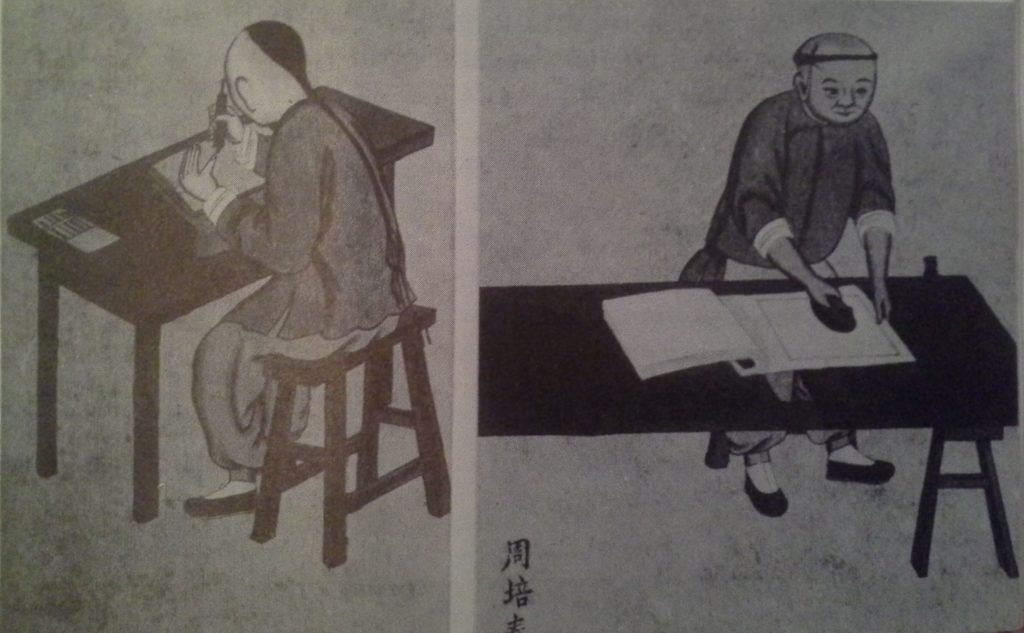
The family was the basic unit in Chinese life. In no country was the family more highly respected than in China. To the Chinese, duty to one’s parents was more important than duty to the emperor. They tried to show respect for their parents by never doing anything which would bring dishonour to their families. Furthermore, sons were expected to care for their elderly parents. The latter had places of honour in their sons’ homes.
This emphasis upon the family formed a strong link between the past and the present. Since ancestors were regarded as members of the family, the living cared for the graves of their forefathers with great respect and each year held ceremonies to honour the dead. Every family hoped to have at least one son to carry on the family traditions and worship. For if there were no son, a family died out and the ancestors were forgotten.
Within the family the father had complete authority over his wife, his sons, their wives, grandchildren and his unmarried daughters, as in ancient Greece. He managed the family property, but women in China, as in India and Rome, had much influence in family affairs.
Confucius taught ideas which made a deep impression on the Chinese. There were three great religions in China. The earliest was what we now call Confucianism. Confucius and Buddha were born only a few years apart and would undoubtedly have known each other had they lived in the same country. Although in later centuries a religion developed around his teachings, Confucius was a profound thinker rather than a religious leader. Like Buddha, he taught a way of living rather than a system of religious belief and worship. Confucius’ goal was to bring about perfect conditions under which people could live satisfying lives on this earth.
According to Confucius, the best way to reach this goal was to have good government. The right man must be trained the right way in order to become the right kind of ruler. This training was to be gained by performing fully the duties of son to father, friend to friend and ruler to subjects. In these relationships between people Confucius emphasized the same idea of treating others as you would have them treat you — that is expressed in the Golden Rule. Even more important was the need to honour the past and to carry on inherited customs and ceremonies.
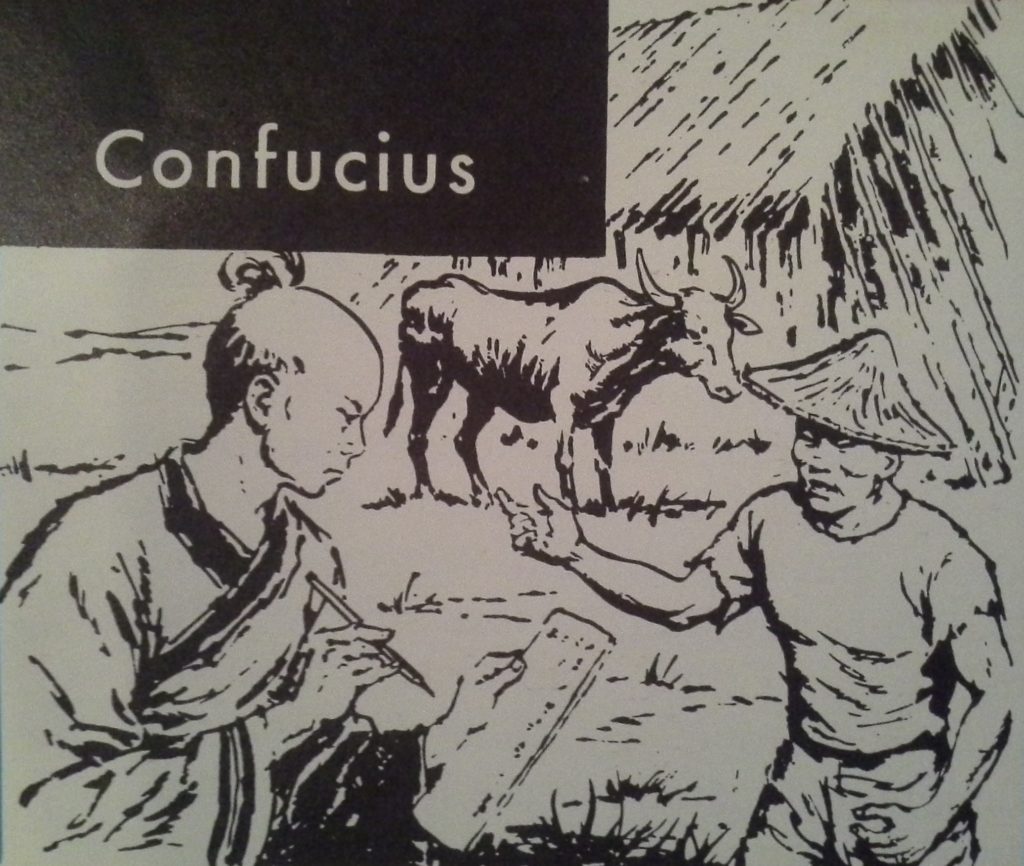
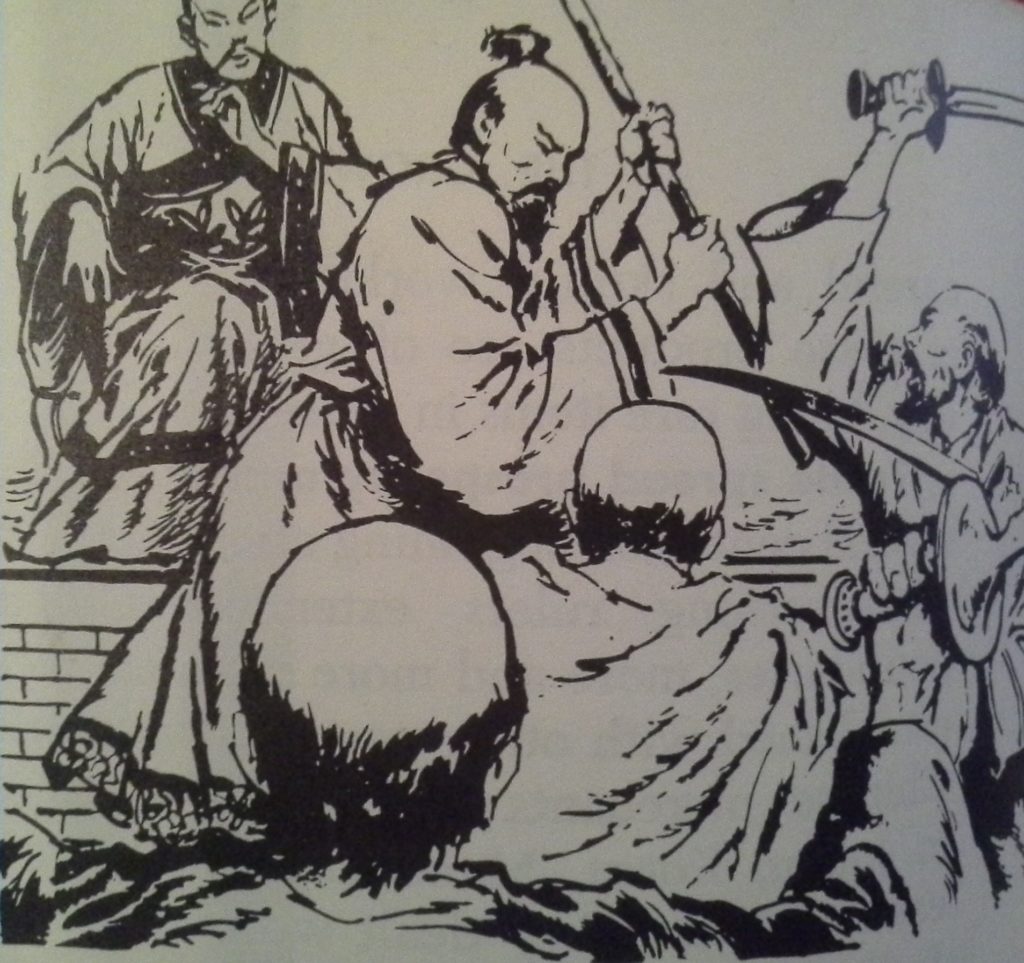
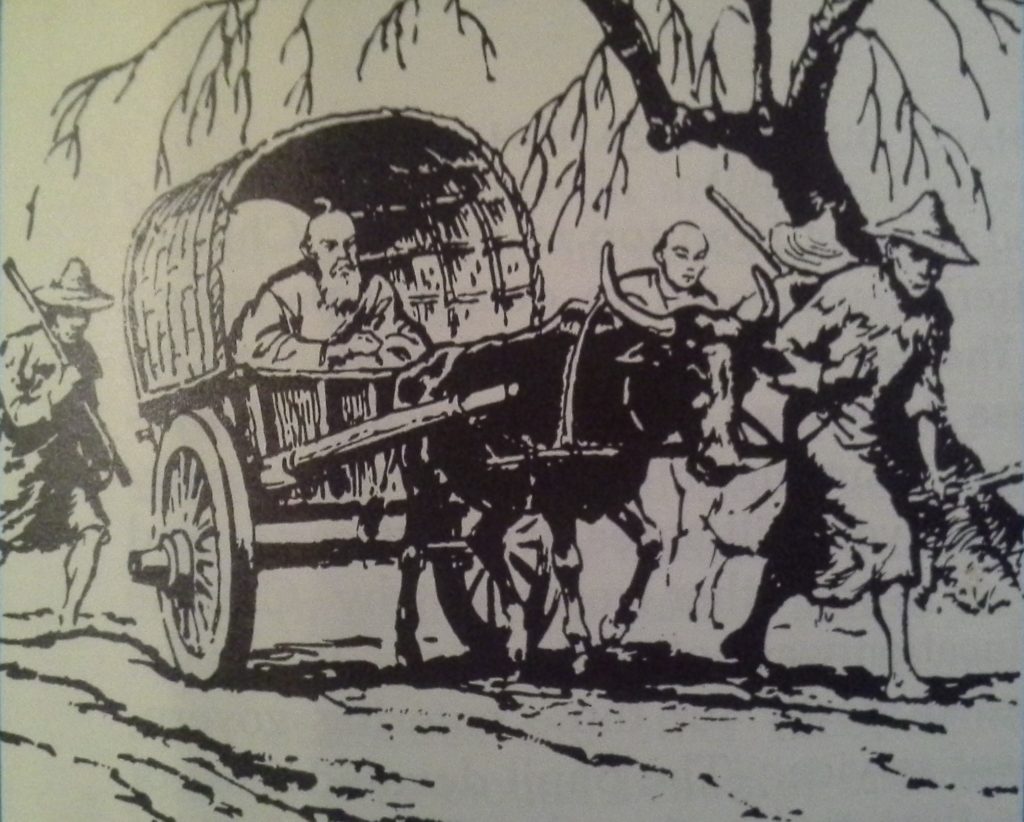
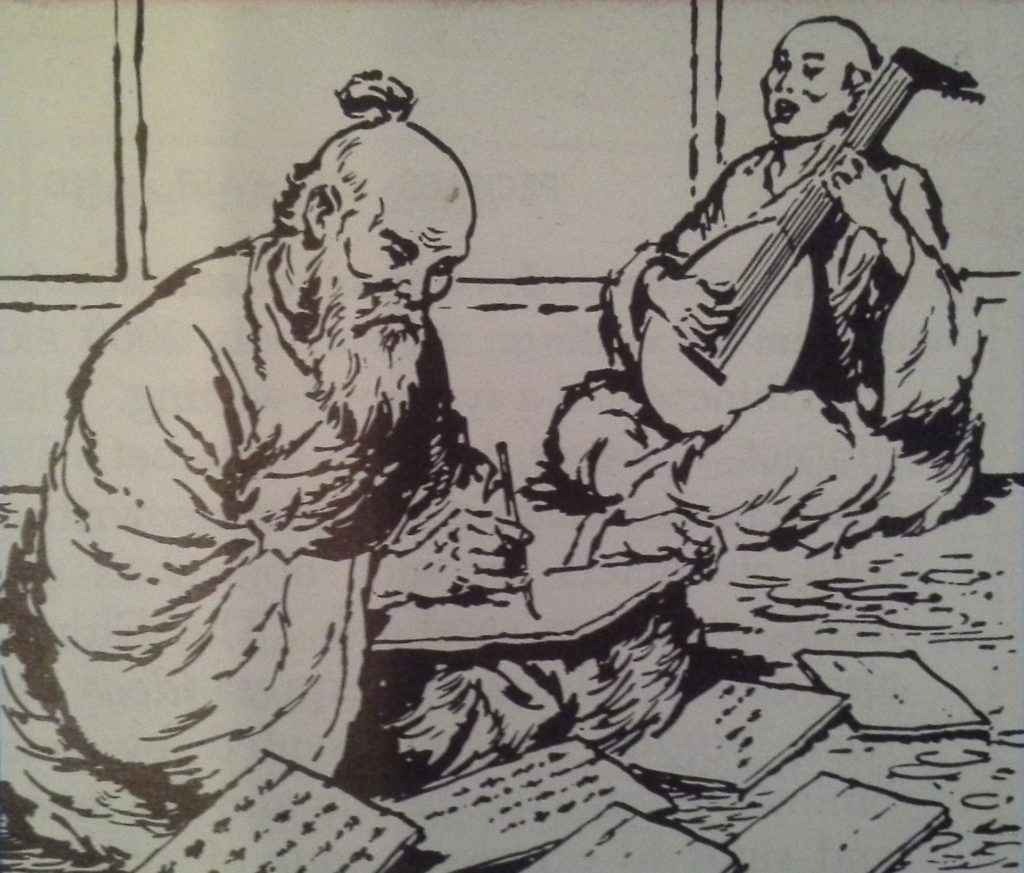
Confucianism became a great religion. Confucius’ wise yet simple sayings were collected in several books. A thorough knowledge of these teachings became the basis for the training of government officials. In time a religion, Confucianism, developed. The emphasis placed by Confucius on “the good old days” of the past became related to ancestor worship. Confucius was revered as more than a great teacher. Temples were set up in his honour, where public officials and scholars offered sacrifices and where religious ceremonies were performed. Confucianism thus became a religion with millions of worshipers in China.
Taoism spread among the Chinese. Taoism, like Confucianism, started as a way of living or of personal conduct. Also like Confucianism, it was founded in the 500’s B.C. by a philosopher. It took its name not from its founder, Lao-Tse, but from Tao, one of the key ideas for which the religion stood. Tao meant “The Way.” By this expression, the Chinese referred to the natural processes through which all living things pass -beginning, change and decay. By about 100 A.D., Taoism had grown into a religion.
Taoists taught that true human happiness was gained by living in harmony with the “way” of Nature. Education, wealth and power, they said, were of little value; every detail of living was guided by numerous gods. In time, however, Lao-Tse’s teachings were partly forgotten. Taoism became for most of its followers the worship of spirits and belief in the power of charms and magic.
Buddhism became an important influence in China. As you learned earlier, Buddhism was carried to China by Indian missionaries and also by Chinese who had visited Buddha’s homeland. By 65 AD. there was at least one Buddhist monastery in China. Within the following two or three hundred years this religion gained a firm foothold there. Buddhism offered the Chinese a feeling of hope that neither Confucianism or Taoism offered– the idea that a person’s life after death was influenced by his conduct in the present. Buddhism in China differed from Buddhism in India. In some respects it resembled Taoism and in fact, it borrowed much from the Taoist religion.
In time, Buddhism became so wide spread in China that the government became alarmed. In the mid-800’s A.D., Buddhist temples and other properties were seized. Nevertheless the worship of Buddha continued. Buddhist ideas also influenced Chinese art and literature.
The Chinese developed a complicated system of writing. As early as 2000 B.C., the Chinese had a system of writing. They did not, however, have an alphabet. The first Chinese writing was picture writing, with characters for such objects as sun, moon, mountain and fish. The Chinese also developed signs to express ideas (the idea “bright” was represented by combining the signs for the sun and the moon) and signs to express sounds of syllables. (All words were single syllable words.) The number of separate syllable sounds is limited, a particular sound might have many different meanings. In the section of China around Peking, for example, the sound i may have any of 69 meanings. To overcome this problem, the Chinese developed separate characters for each word. These word characters included both idea signs and sound signs. The same sound sign might be used again and again, but by being combined each time with a different idea sign it was given different meanings.
This system of writing was very complicated. Separate characters had to be developed for each word and each character or sign had to be memorized. Altogether there are over 90,000 characters in the Chinese language which the well educated person must learn, although in daily living only a small portion of these are used. Writing these characters itself became a fine art in China. The signs were made with brush strokes in vertical columns beginning at the right of the page and running from top to bottom. Chinese lettering was used to decorate paintings.
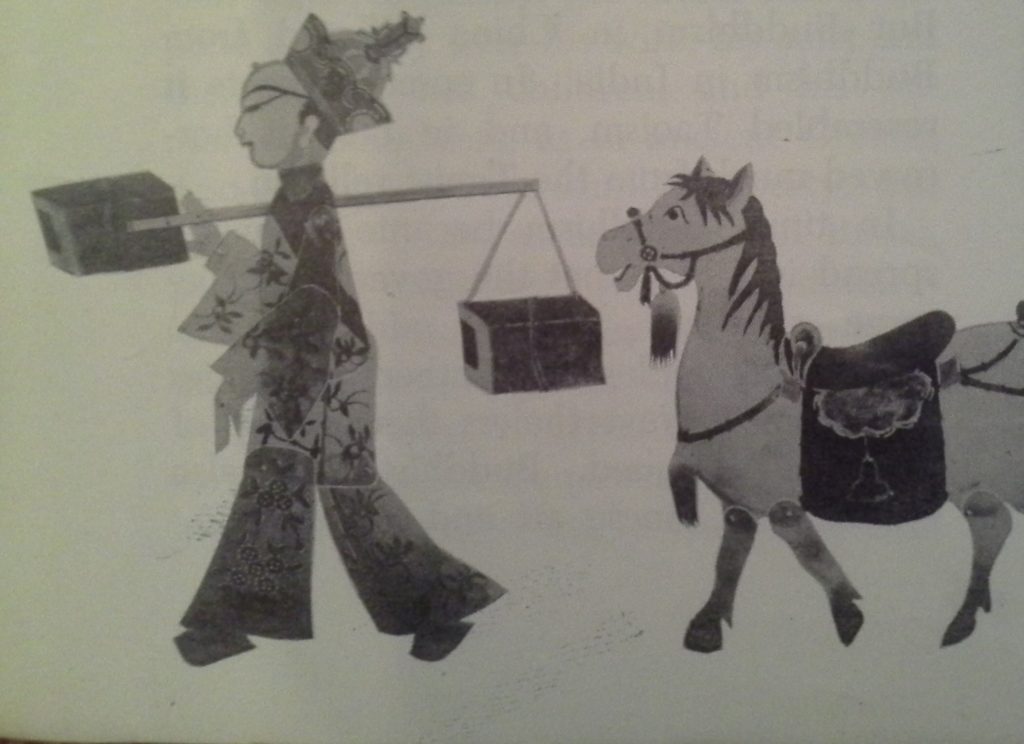
Though education was limited, the Chinese developed a large collection of writings. Learning to read and write in early China, you will agree, was not easy. There were other reasons why Chinese education was not widespread. It was designed mostly for those entering government services (The pupil devoted most of his time to learning the vast amount of information required to pass the various examinations.) Schooling also was too expensive for most people. In general, education was limited to the sons of the well to do. For such reasons, most Chinese could neither read nor write. There were large numbers of government officials, priests and wealthy persons, however, who could do both.
The educated class produced writings of many kinds. Detailed public records were kept for each dynasty. This fact together with the interest of the Chinese people in the events of the past, led to the writing of history. China came to have more continuous and complete accounts of its past than any other nation. There were also books on government, law and agriculture. In addition, there were many religious writings and textbooks by the hundreds written for students who were preparing for government examinations, those textbooks contained the teachings of Confucius, Chinese history and related subjects. Finally, many writers produced excellent poetry, plays and novels.
Chinese art was excellent. Like the ancient Egyptians, the Chinese showed great skill in their arts and crafts. They also had remarkable artistic ability. These qualities are shown in articles for everyday use as well as in works of art. Early Chinese bronze work and pottery are especially prized today.
Chinese sculptors were influenced by Greek and Indian ideas which were brought to China by traders and missionaries. In addition to statues and to carvings done in relief, Chinese artists made many statuettes and other small figures. They also fashioned beautiful ornaments of silver, gold and jade. The latter, a stone usually green in colour, was highly valued for its colour, lustre and hardness.
Most remarkable of all Chinese art, however, was painting. The artists worked with many colours on paper, silk and other materials. They produced fine pictures illustrating Chinese history, legends and literature. They are best known for their landscape paintings. The Chinese had a strong love of nature which is revealed in paintings of birds, flowers, mountains and streams.
Chinese architects built for usefulness and for beauty. Chinese architects planned their buildings to fit into the natural setting rather than to attract attention by themselves. Massive walls surrounded not only their cities but the courtyards, or compounds, in which they placed their palaces, temples and other important buildings. These walls were built of stone or brick, but for other building purposes the Chinese preferred wood. In general, Chinese buildings were one or two stories high, set on platforms. On the platforms were columns which supported large overhanging roofs with curved outlines. Between the columns were side walls, but these did not bear the weight of the roofs. The homes of the common people were, of course, very simple compared to public buildings and the houses of the wealthy.
The Chinese built many towers and pagodas. The pagoda was a tower with numerous roofs, one set above the other, separated by columns and galleries. The roofs were ordinarily covered with tiles. Pagodas were used for temples and for memorials — buildings to honour the memory of a great man or a beloved relative. Much use was made of colour in decorating the columns and outside surfaces of wooden buildings. On the whole, Chinese buildings gave an impression of solidity and harmony with their surroundings.
CONFUCIUS SAID:
To know what you know and know what you don’t know is characteristic of one who knows.
A man who has made a mistake and doesn’t correct it is making another mistake.
It is easy to be rich and not haughty. It is difficult to be poor and not grumble.
The superior man blames himself; the inferior man blames others.
When you meet a man worth talking to and don’t talk to him, you have wasted your man. When you meet a man not worth talking to and you talk to him, you have wasted your words.
A gentleman is ashamed if his words are better than his deeds.
Do not do unto others what you do not want others to do unto you.
The civilizations of India and China influenced other peoples. Northeast of China lies the peninsula of Korea and to the east are the islands of Japan. Surrounding the China Sea are most of the lands and islands of Southeast Asia — Formosa, the Philippines, Indonesia, lndo China, Thailand and the Malay peninsula.
All these areas trace their beginnings to early times. They were peopled by various groups and mixtures of races, one of the most important of which were the Malay people. All of them established their own simple ways of living, but much of their progress was the result of contacts with India and China.
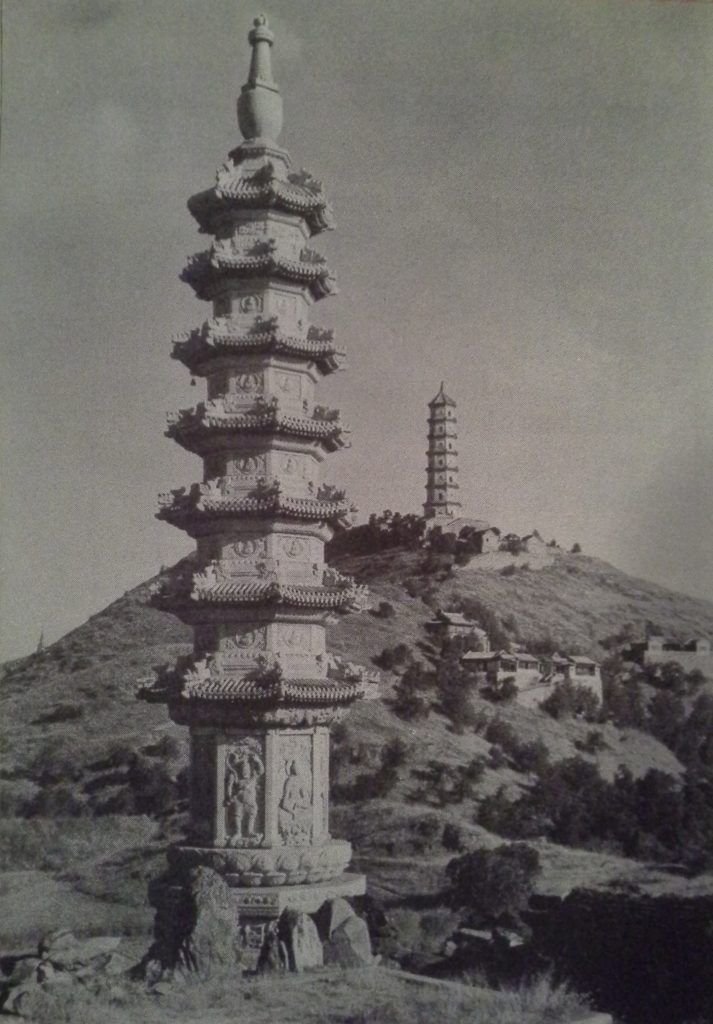
In some places, Indian influence was more important, and in others the Chinese. For example, beginning about 100 A.D. people left India in growing numbers for Southeast Asia and the islands off its coast. They settled at key points on trade routes. They were, as an old record of about 1100 A.D. says, “brave men, born to wander over many countries, penetrating the regions . . . by land and water routes and dealing in various articles such as horses, elephants, precious stones, perfumes and drugs. . . And wherever they went, their ideas went with them — ideas of art, literature, science and religion.
Meanwhile adventurous Chinese were also on the move. Most of them went to Southeast Asia. Here they came in contact with the earlier Indian influence, so that the large peninsula of this part of Asia has come to be called Indo China. Many Chinese, however, went to Korea, some to Manchuria and a few to Japan. It was about 100 B.C. that Korea, then a group of kingdoms perhaps 1000 years old, became part of the Chinese Empire. Confucianism and Buddhism reached Korea as did many a Chinese invention, including block printing. Korea in turn acted as a steppingstone between China and Japan. Through their contacts in Korea, the Japanese picked up many Chinese ideas.
During the years following 600 A.D. Japan had more direct relations with China. Japanese students and Japanese Buddhist priests visited China and studied there. Trade grew up between the two countries. The Japanese borrowed from the Chinese in fields of art, religion, literature and government. Unlike the Chinese, the Japanese were sharply divided into social classes and the military class was highly honoured. Only the high nobility could hold government offices.
Many peoples have built our civilization. Stories tell of the influence of one people upon another. India and China were influenced by Persian, Greek and Mohammedan ideas. In turn, India and China passed on their civilizations to other Asian peoples. Indian and Chinese ideas also influenced the civilization that was to grow in Europe and the Moslems, who brought the civilizations of India and China into closer contact with Europe.
